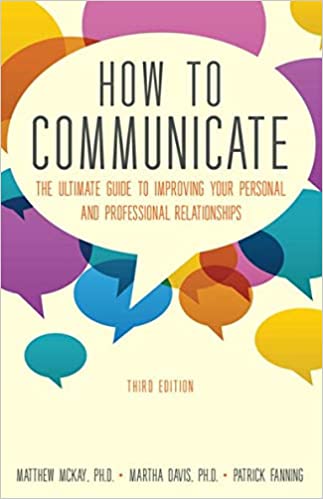
I recently finished reading How To Communicate. Everyone’s life would probably made a little bit easier with the ability to communicate effectively, so I figured I would give this book a shot. It was filled with very thoughtful insight and information into how people interact. Despite this, it was not a very easy read. I found it difficult to read much more than 20 pages at a time. The book is written like a textbook with fill in the blank exercises near the end of most chapters. I had intended to learn about communicating better in work and social settings. This book does a great job over covering these situations and also delves into resolving conflict, communication with children, public speaking, interviewing, and sexual communication. Despite not being an “easy read,” it does have plenty of useful information.
I would imagine that if ten people were to read this book, they might all declare different chapters as most interesting or relevant. Everyone has his or her own methods of communicating and all have different strengths and weaknesses. I found that reading this book helped me to identify exactly what my strengths and weaknesses are. I tend to “beat around the bush” a little too much. People are generally not mind readers, so by not saying exactly what I would like to do or accomplish leaves others sometimes mistaking my intentions. I think many people have a weakness in this area. If you are asking for something that another person might not want to give up or do, or you are, perhaps, giving some news that will not be well-received, you may try to sugar-coat or disguise it. This will often lead to miscommunication. We all walk around with our own perception of the world and it may differ greatly with the person we are communicating with. Removing unpleasantries from a communication can sometimes turn that communication into a complete miscommunication because those unpleasantries are facts relevant to the communication. Disguising these facts will ultimately lead to more unpleasantness and drag out a situation before a resolution can be achieved.
There was one chapter, that I feel might be universally received. It discusses how culture and gender affects communication. I noticed that I often like to spout solutions to problems people confide in me. Males might appreciate this, but females often are going to be more satisfied by just having someone listen to their problems and understand their feelings than have possible solutions thrown back at them. Males and females also tend to interact differently in small work groups. Recognizing behaviors that the opposite sex might find favorable or unfavorable will certainly help accomplish tasks in small groups. With regard to culture, Latin Americans tend to prefer less personal space than Americans and may feel distanced and even alienated in spaces comfortable to Americans. Japanese tend to value apologies as an expression of goodwill, where Americans are more apt to see apologies as an admission of guilt. Arabs may refuse something offered hoping that you will offer it again. Unidentified differences in culture and gender will also often lead to miscommunication. Being able to recognize what a person of another gender or culture may value is vital to strong communication.
I am going to apply what I have learned in this book and hopefully it will stick. The ability to communicate your ideas and feelings is a very useful life skill. Everyone should endeavor to improve his or her communication skills. Your work, personal, and social life are sure to benefit. It might make all the difference in the world.
